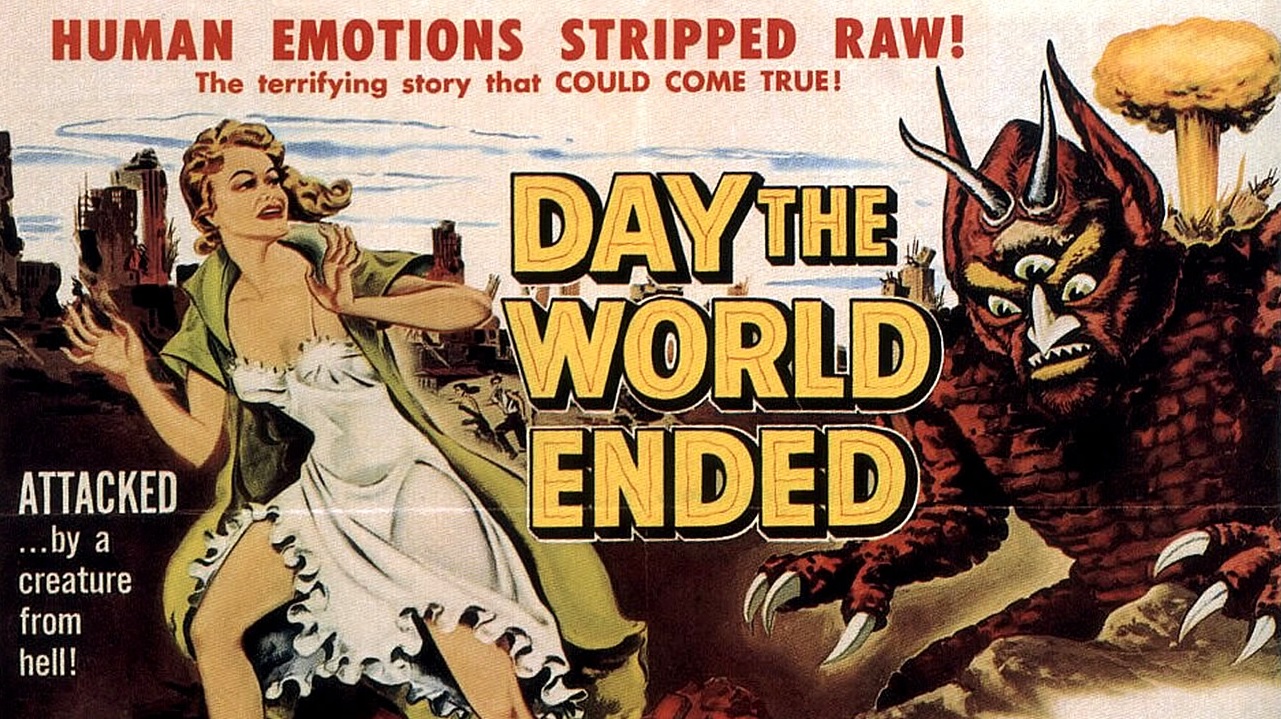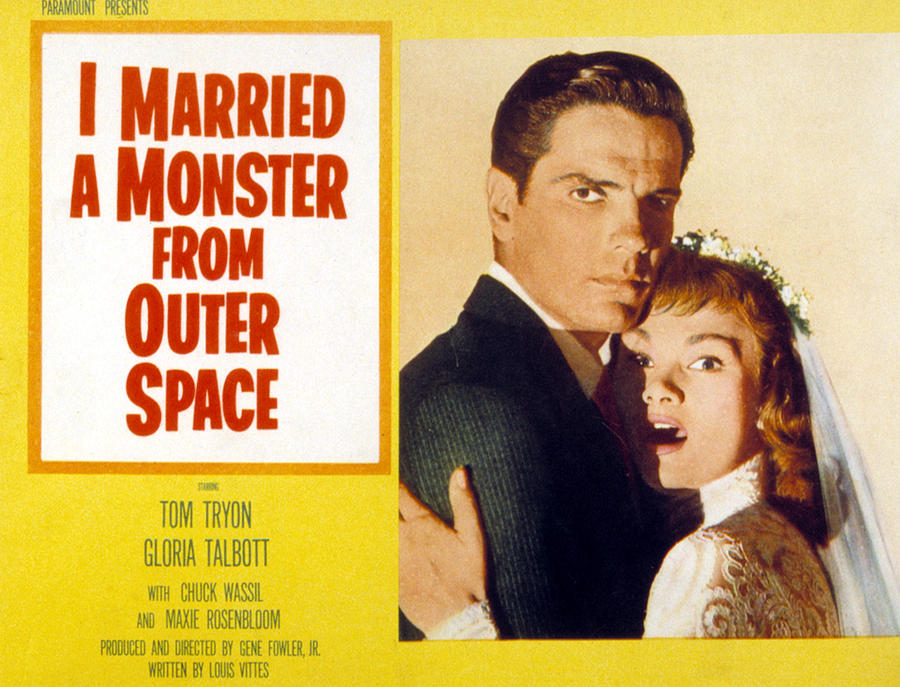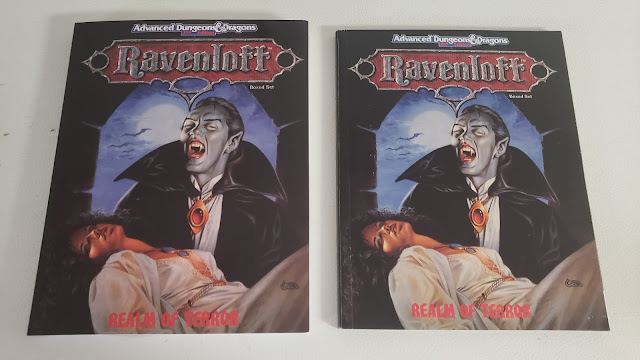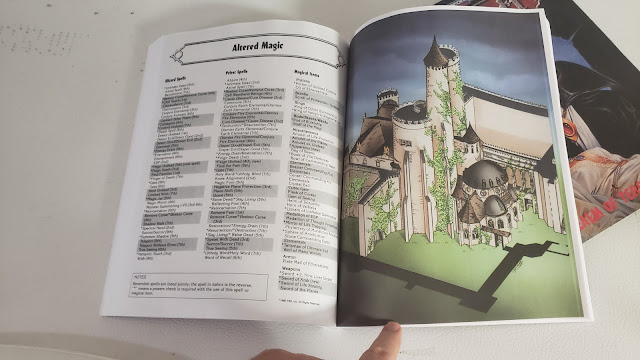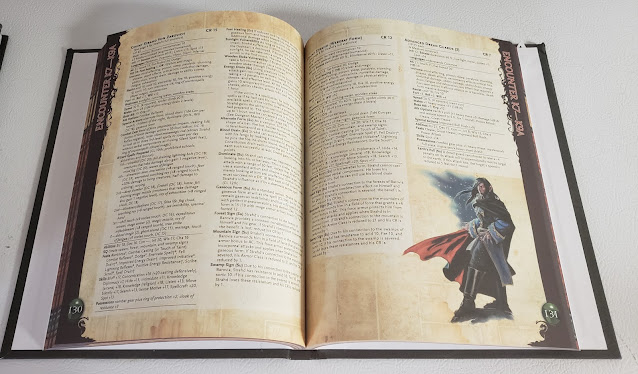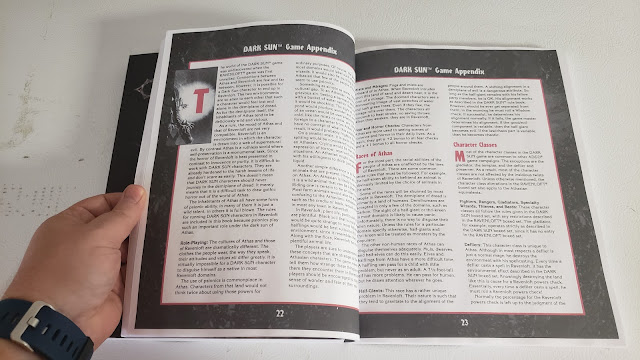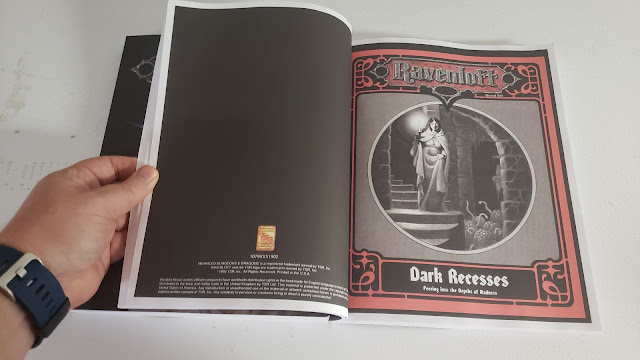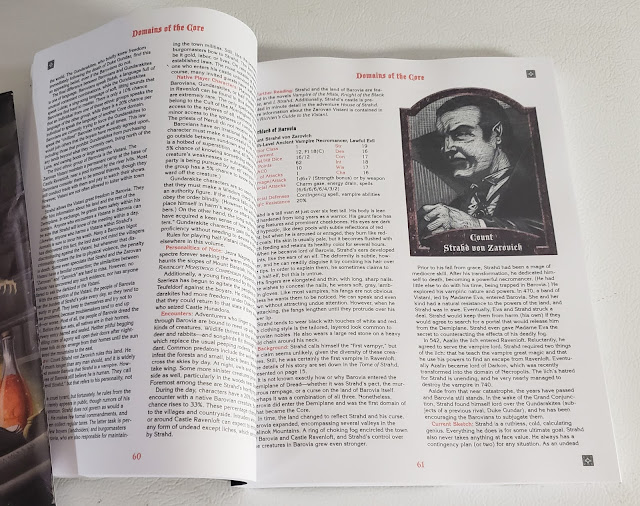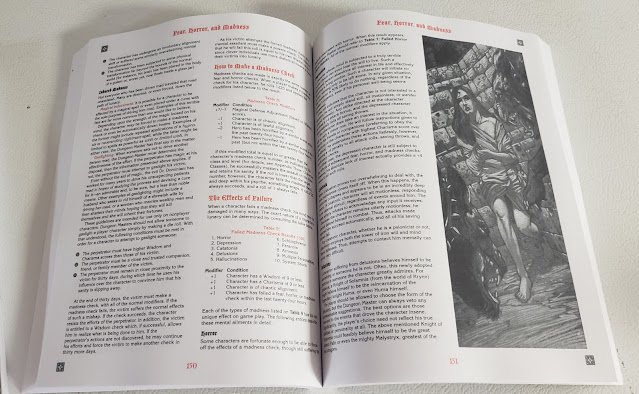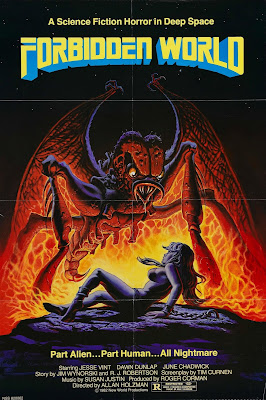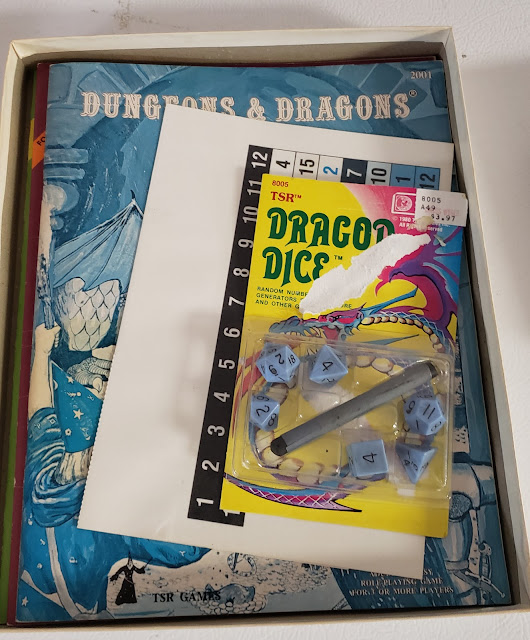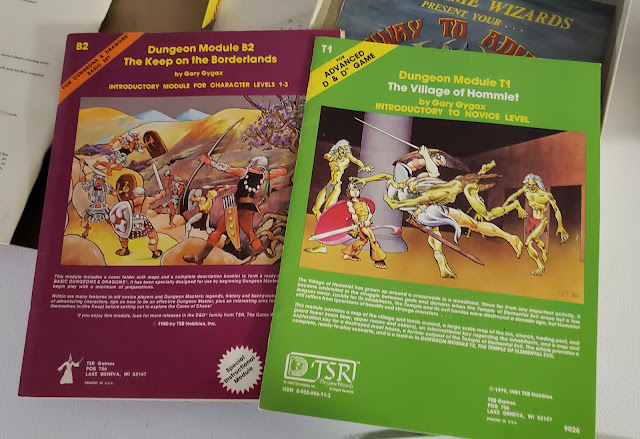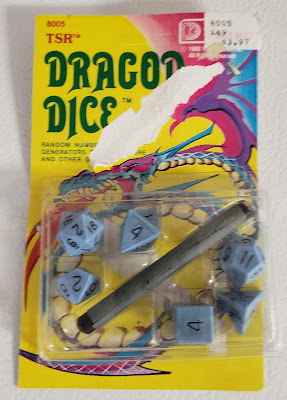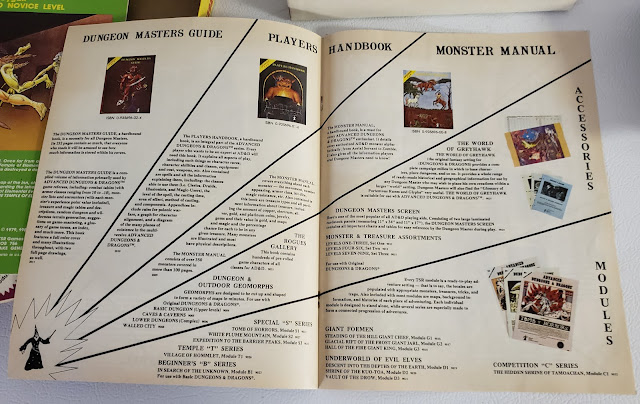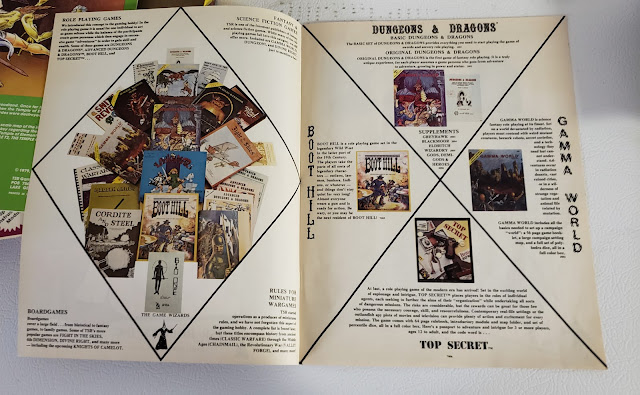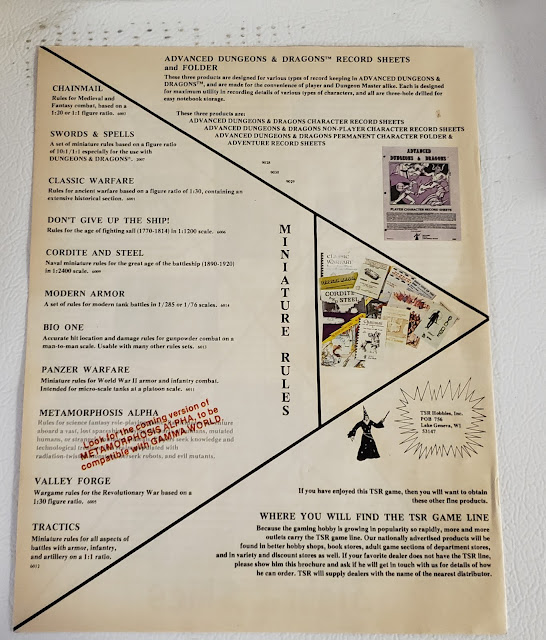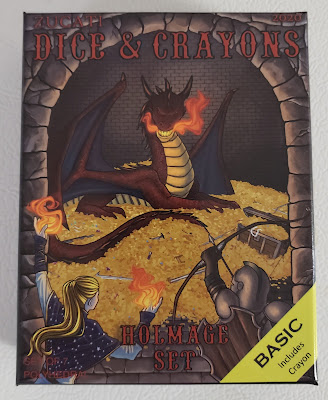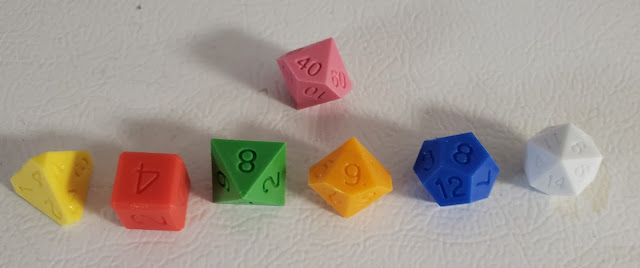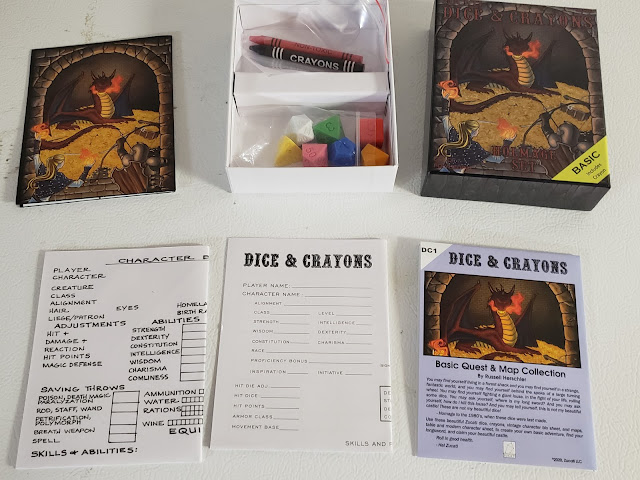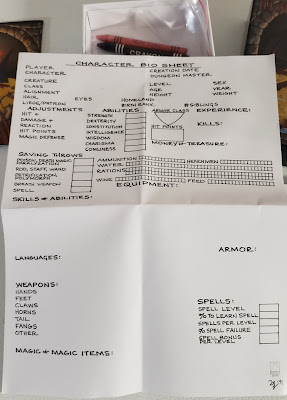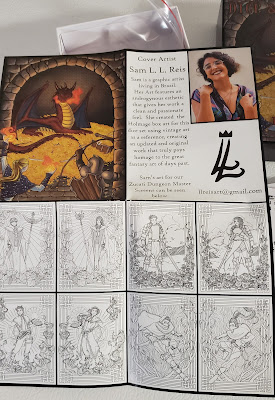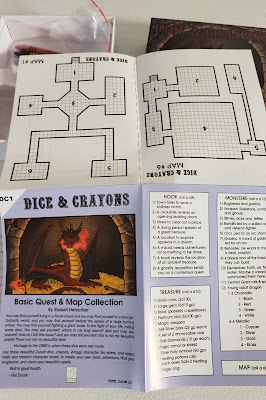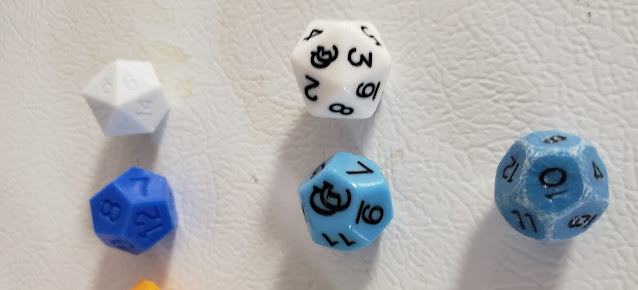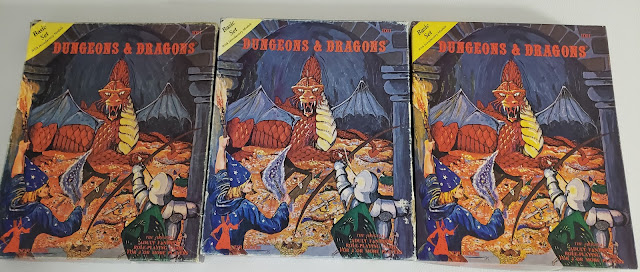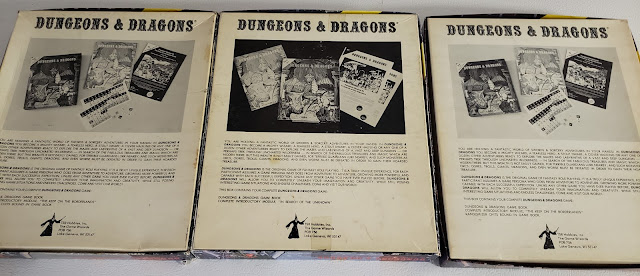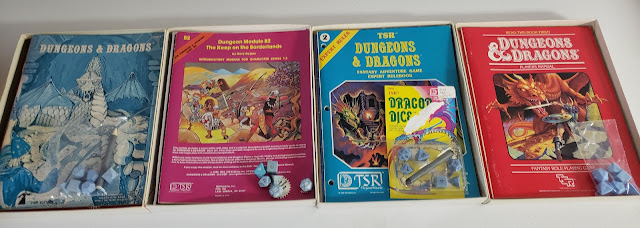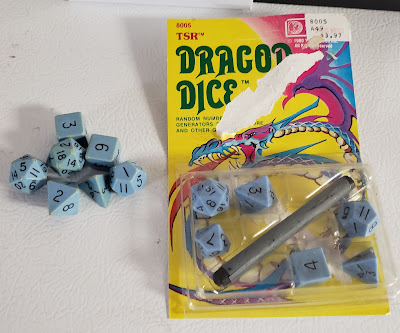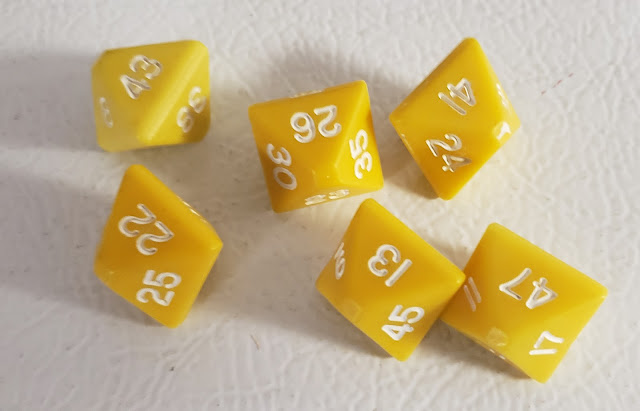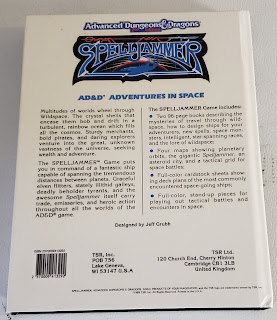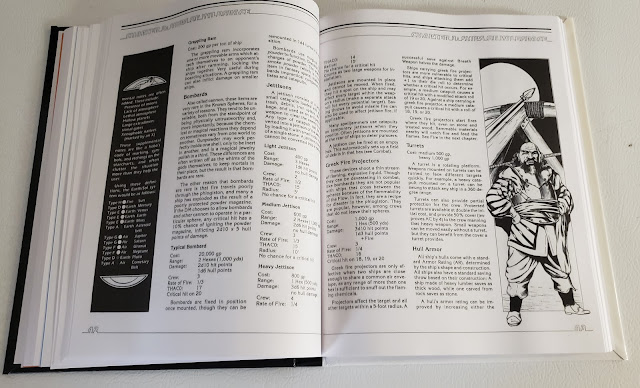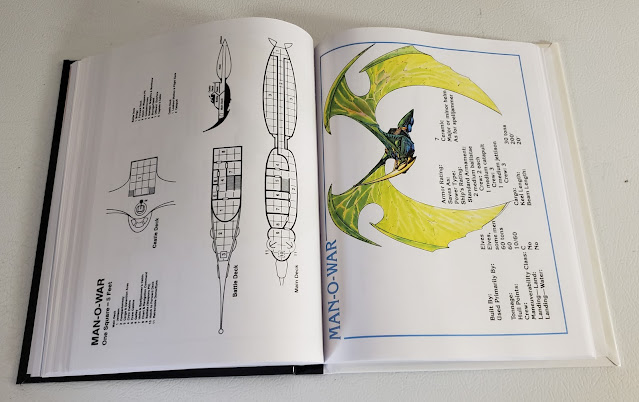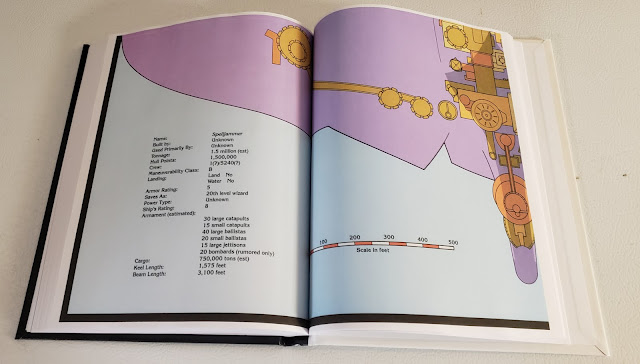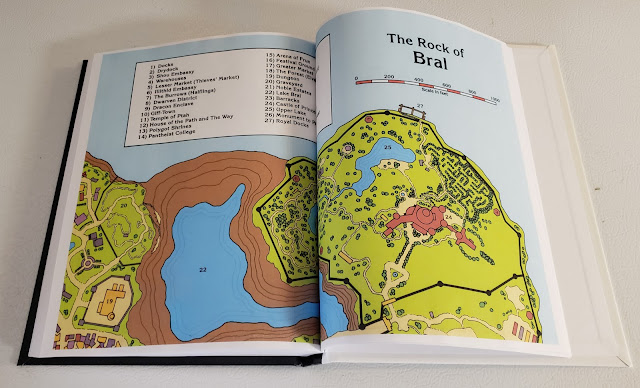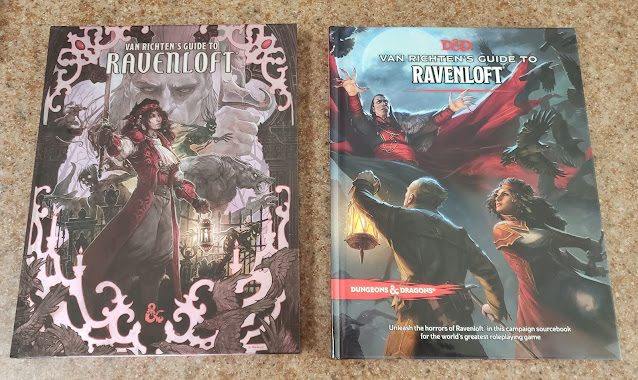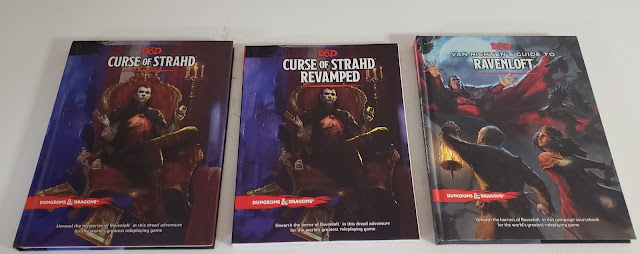
This is Part 2 of my exploration of the new Ravenloft book. You can also read
Part 1 and
Part 1b.
So last time I ended with character creation. A couple of other points. I was talking with my oldest son about the new classes, asking his expert opinion on how balanced they were. He says that they are fine, nothing too out of the ordinary. He just wondered why we need a Warlock with the Undead as a Patron when The Sword Coast Adventurer's Guide already had a Warlock with the Patron The Undying. Yes, they are fairly similar.
People seem concerned that two of the three lineages can see in the dark (Darkvision). Well...this has always been an issue, elves, dwarves, gnomes, all have been there from the very, very start and they can also see in the dark. Fear of the dark is a powerful fear, but it is also not the only one. I always made the mists very opaque. You might be able to see in the dark, but not the dark found in Ravenloft. Afraid yet? Well to quote one important gnome, "you will be. You will be."
Chapter 2: Creating Domains of Dread
Before we get into all the Domains of Dread (39 domains in total) we are going to talk about the creation of a Darklord. Why do this first? This gets the Ravenloft DM to think about what needs to go into a Domain, AND what doesn't.
Domains are reflections of their Darklord. The building of a Darklord looks at the relationship between the Darklord and the characters and even the players. I mean starting in Barovia with Strahd is always fun, but what if your players are not into vampires? No problem, there is something here for you and your players. Here the Darklord is created by asking questions about their past life, their fatal flaws, what makes them evil. Yes. This book presents the Darklords as all as unrepentantly evil. Evil with a capital E. Of course, the Darklords may not see themselves as evil or even as a Darklord, but that doesn't change what they are.
Following the Darklord creation, we create a Domain. Remember that Domains are designed not just to be a prison for the Darklord, but one that tortures the Darklord as well. Strahd is trapped and constantly tormented by his obsession with Tatyana. She is constantly being reborn, each time she torments him more. Various other questions are asked. What sort of culture is this? What do they fear? How do they treat outsiders? And a lot more. Asking these questions here help understand what the domains are later on.
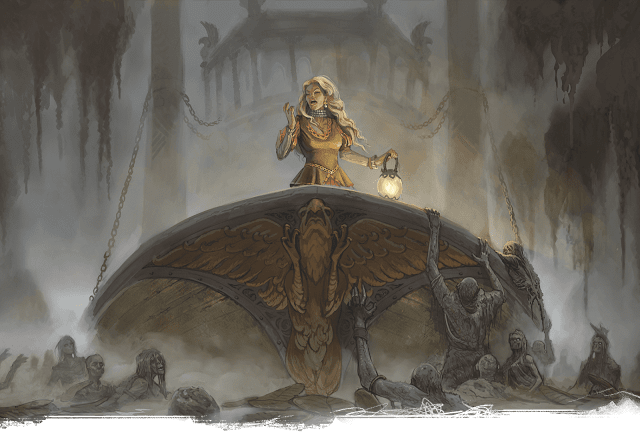 Larissa Snowmane
Larissa Snowmane on the River Dancer. Growing up near the Mississippi, I have had nightmares like this.
The next section, and one of the best, cover all the different sorts of horror you can use and the ones this book uses. Reminder. Ravenloft is not really Gothic Horror. Sure it has elements of Gothic Horror. It has the tropes of Gothic Horror. But even the AD&D 2nd Ed version of Domains of Dread informed us that Ravenloft is actually Fantasy Horror. So let's see what the book has.
- Body Horror - horrors about being transformed or our bodies failing us. Think of movies like The Fly, The Thing, or one of my newer favorites, Tusk.
- Cosmic Horror - horrors from beyond and the cults that follow them. Think Cthulhu.
- Dark Fantasy - the intersection of fantasy and horror. Arguably where Ravenloft works the best.
- Folk Horror - One of my favorites. Old towns with strange natives. Pagan cults and practices. The Witch, The Wickerman (original one please), and Midsommer are good movie examples, but there are a lot more.
- Ghost Stories - an old favorite. Ghosts, haunted houses, haunted...well everything.
- Gothic Horror - yes, it is represented here. Gothic Horror has much in common with the Romance genre. The difference is the inclusion of a monster. Not a snarling beast, but often an old, often European aristocrat. Dracula is the prime example given, but also the works of Poe and Le Fanu.
These are the main ones. They all feature examples and tone. They also discuss the types of monsters that would be common. Additionally like all D&D 5 books, there are plenty of d8 and d10 tables of options and suggestions.
There also others that are more briefly covered. Disaster Horror, Occult Detective Horror, Psychological Horror, and Slasher Horror. All of these are now used in the Domains. Well...they have all always been used, to be honest, now we are just more explicit about it.
Is this enough to run a horror game? Well...no, not really. It is PERFECT for running a Ravenloft game. It's not really designed to run a Call of Cthulhu game and certainly not a Kult or Little Fears one, but it does work here.
If you have never run a horror game before then there is a lot here that will help you. If you have run horror games then this is a good introduction to the type of horror you can run in Ravenloft.
Chapter 3: Domains of Ravenloft
This the largest portion of the book. Nearly half of all the pages.
The first part covers souls. As in, most of the people in the Domains don't have them. This is not a new idea really. It was touched on in the Knight of the Black Rose books. The soul of Kitara was "copied" and her true soul was set free by the Darkpowers to whatever reward (well, punishment) her god (Takhisis) demanded. What stayed behind was created by the Darkpowers to torture Lord Soth. Similar to the soul of Firan Zal’honan's son.
The section on souls also has a bit that should really scare D&D players. While most "people" don't have souls, the ones that do better keep a tight grip on them. Dying in Ravenloft is bad. How bad? Even if you are raised or brought back under 24 hours a bit of your soul is still wandering the Mists. Over 24 hours? Your body might be raised, but it won't have your soul in it. That soul will be reincarnated over and over in Ravenloft. Welcome to the Hotel Barovia. You can check out anytime you like but you can never leave. While I felt this was a negative feature in Curse of Strahd, it is a positive here. A scary one at that. Death is permanent after a point and death is not even an escape from the mists.
The Domains are now not all Gothic Horror. They fit into 1 to 3 sub-genres of horror described above. Gothic Horror is just one of those types.
Unlike previous editions that would feature the Darklords and the Domains separately, this book keeps them together. This is a big improvement. Darklords are inseparable from their Domains, and this book sells that philosophy well.
Seventeen Domains and their Darklords are covered here in greater detail and 22 in lesser detail. Not every Domain from the old books are here. Nor should they be. So goodbye Sithicus, you were fun, but we don't need you now.
Each Domain is covered, it's Darklord listed, the Genre (from above) listed, usually one to three, the Hallmarks of the Domain and the various Mist Talismans that can drag you here or help you leave. Also, each covers what characters and people with souls think of their lands and what it means to them. While the Domains are not really part of a world as others think it there is no reason that people living there know that. Some might suspect something, but they have always lived like this and this is what is normal for them.

There are some alterations to every part of the Domains. Some are minor, many are major. While some bemoan this I see it as fantastic. First, I am not going to be playing this with anyone that knows the difference between Falkovnia and Fallstaff, AZ, let alone the difference between Mordent now and Mordent then. Plus even if they did, well that is just the Dark Powers messing with their memories. “Yeah you thought it was like this, but it really isn’t!”
A couple of other points. The Darklords don't have stats. But really, the Darklords don’t need stats. At no point EVER in all the years I ran Ravenloft I never had a group of players that wanted to go after a Darklord. And many that never even knew who the Darklord truly was. How many Dracula movies are there? How many has he been killed in? Same here, I don't care even if the Darklord IS killed, they will be back as soon as I need them to be.
Also, the Domains are not as connected as they once were. Domains can be islands, or connected or not. Ravenloft is not a "world" it is a loose collection of semi-connected prisons. Only the Vistani can safely and somewhat reliably navigate the Mists and that is exactly as it should be. Connect them if you want, I am playing this as an homage to the old TV series "
The Fantastic Journey," the characters, and the players, step into the Mists and no one will know where they will end up.
Each Domain feels new to me. Like I am headed back to a place I once knew. It would be exactly like me going back to my old University town. It has changed a lot since I was last there in 1994, the streets are the same, but the buildings are all different. Some things are the same, but there are things that are new. This is the same.
Barovia is the first, well for many reasons, but here it is alphabetical. It is also the one that will most familiar to old and new players alike thanks to Curse of Strahd. Like Curse of Strahd is completely supports my thinking that Baravoia is from Mystara, even though it is never stated here.

A couple of other notable Domains. Darkon was the former domain of Azlin Rex, now it is a Domain in slow-motion destruction. Like watching an explosion slowed down. Azalin is gone, where is he? No one knows. The Kargat still run the place, and there are other factions, but everything else is falling apart. It is listed as Dark Fantasy with Disaster Horror. Darkon was always the most "D&D" of the Domains, but now it is in tatters. It is also a Domain searching for a new Darklord; PCs beware.
Falkovia is now ruled by Vladeska Drakov. Now no longer a dime-store Transylvania and a bargain-basement Vlad Tepes, it is now World War Z in the Dark Ages. Think the Black Death, if the Black Death could get up and go after you. This is fantastic! And, really let's be honest, Vlad Drakov and Falkovia always kinda sucked. Really. It did. This is so much better. Har'Akir is so improved that I want to use it first. Hazlan's Darklord Hazlik finally is portrayed as we always said he was back on the old RAVEN-L lists. He is not evil because he is gay, he is evil because he is a cold-blooded psychotic killer, even beyond that what other Red Wizards of Thay can accept.
Dementlieu. Ah...now here is something really fun. Completely changed from the old one this is an endless Masquerade, both in terms of the party and how everyone lives. The Darklord of Dementlieu is "Duchess" Saidra d'Honaire. She fancies herself as a Lady, but is really just a commoner. In fact, everyone lies in Dementlieu, and every lie has to be more outlandish than the last, but uncovering a lie, or having your lies uncovered, is tantamount to that person's death. It is Cinderella plus Masque of the Red Death (Poe's version, not the AD&D one) mixed with Bridgerton where every negative high-class society stereotype turned all the way up to 11 and put in a background of "be the most popular or die" attitude. Get caught up in the lies and deceit and you could be lost in the Grand Masquerade. You will never or should never get into combat situations in Dementlieu. You could for example challenge some "Lord" to a duel, but his second will, unfortunately, will not be there and he is under strict guidance from his doctor not to duel. Or some other reason. Most likely Saidra d'Honaire will out you as a fraud first. OR, the would-be combative will be caught in a lie and reduced to ash in front of your very eyes by the Duchess.
The list can go on. Harkon Lukas is more than just a fop now. He is a great example of a Darklord that has no idea he is a Darklord and thinks he is good. But we know he isn't. Viktra Mordenheim is a great update over the thin pastiche that Viktor Mordenheim was to Dr. Frankenstein. Chakuna, the new Darklord of Valachan replaces the old Darklord Baron Urik von Kharkov. I actually liked Baron Urik von Kharkov and the later art made him look like Tony Todd, always a plus. No opinion yet on this one. But it does look interesting.
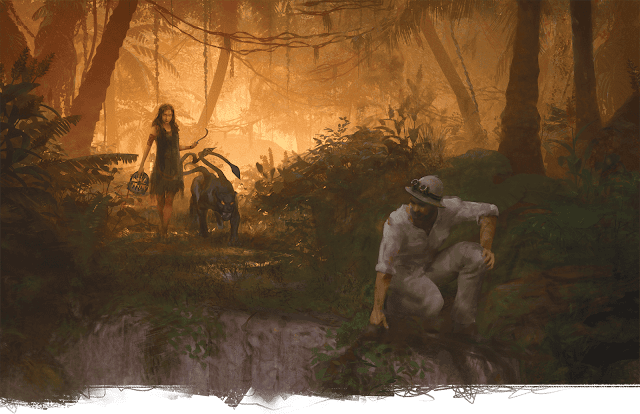
The Displacer Beast is a nice touch for this Domain
Not everything is perfect here though.
Yes, some of the domains are not as well defined as they could be or even should be. Some details are here, but some are left out. I mean how do you grow food in an endless night? To be honest, I really don’t care where the crops are coming from in Ravenloft to feed the townspeople anymore than I am worrying about where the crops come from to feed the townspeople in
Frankenstein Created Woman all I care about is will they have their pitchforks ready when I need them. And in truth, the book covers this in the very beginning with their “this is a world of nightmare logic” and the fact that most "people" in the Domains are not even real. You can even assume that nothing exists for real until the characters need it too. The Dark Powers provide it all. How can hordes of zombies attack Falkovia every month like it's Episode 8.03 of
Game of Thrones? Doesn't matter, it does and they do until the end of time.
We also get some important NPCs. They are a great bunch, to be honest. Among our "Stars" are Van Richten himself, the Weathermay-Foxgrove twins, and Ez d'Avenir. Others are also returning stars from previous editions with more details.
I think Alanik Ray and Arthur Sedgewick are very much improved. They remind me of what Holmes and Watson from the Netflix show the Irregulars could have been like. I know there are people complaining that “they made Holmes and Watson gay!” No. They made Alanik Ray and Arthur Sedgewick gay. And guess what. They can do that if they want. They are now more than just a thinly veiled dime store Holmes and Watson.
Having Larissa Snowmane from the novel Dance of the Dead is a nice nod to fans, but they mention she avoids Nathan Timothy and yet they give no indication of who that is or his own Domain or why they would be interacting. I mean I can pull my old books, but newer players don't have that.
They bring up Firan Zal’honan, but also never talk about how he used to be Azilin Rex. Or maybe he will be again? I mean I am thrilled to see him! I can remember reading “I, Strahd: The War Against Azalin” in 1998 when it came out, sitting on my backyard deck and watching my wife work in the garden. This is deep-cut stuff. But my son, who was not even born yet at that time, has his own copy of this book and has no idea who Firan is.
Among the new Domains is the very compelling Cyre 1313 from Eberron. It's a freaking Ghost Train! Who has never heard a tale about a Ghost Train? This is one of the Domains, like the Carnival, that overlaps other Domains for a time. It can travel the Mists and not in a good way.
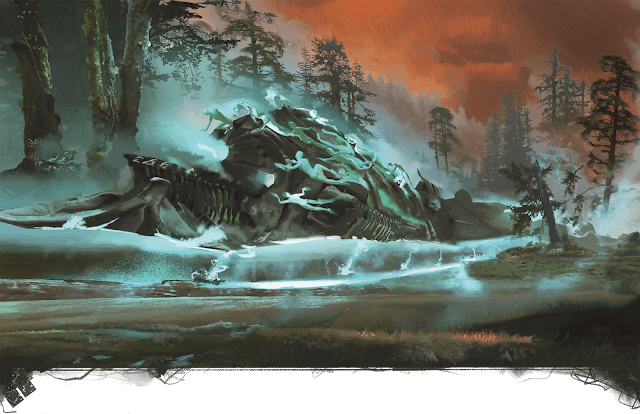
I am not a huge fan of how it looks, but my knowledge of Eberron is slim. This might be how all trains look. For me, I might make it look more Victorian. But that's my solution for most things. Though floating over the ground with little electrical sparks is good.
That is quite a lot of the book. Next time I cover Chapters 4 and 5.

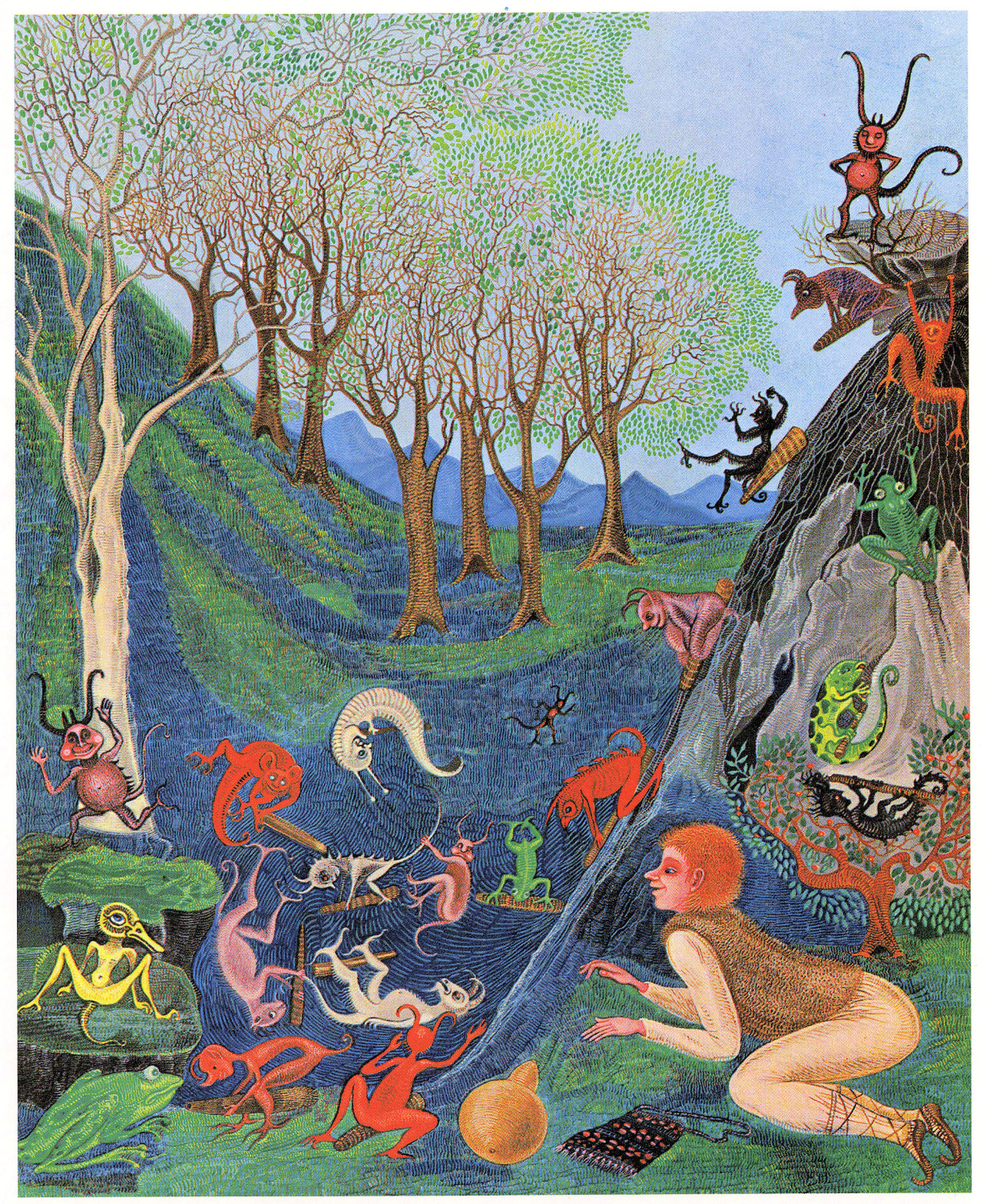
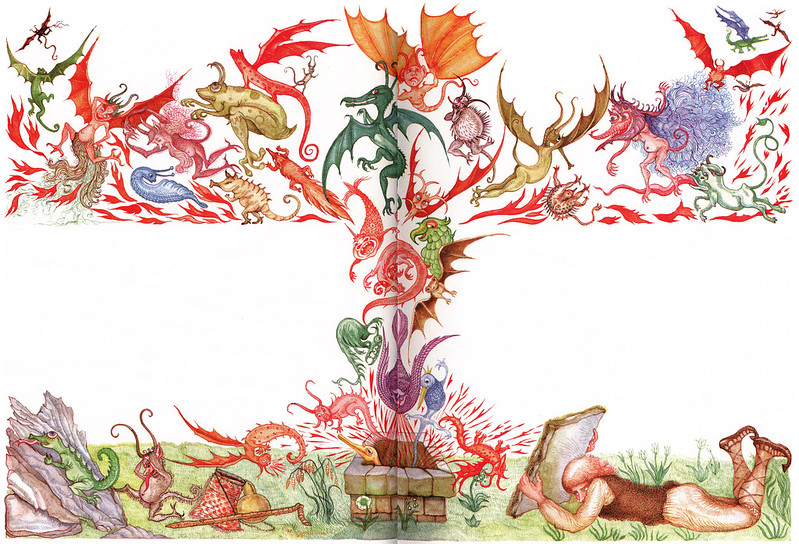
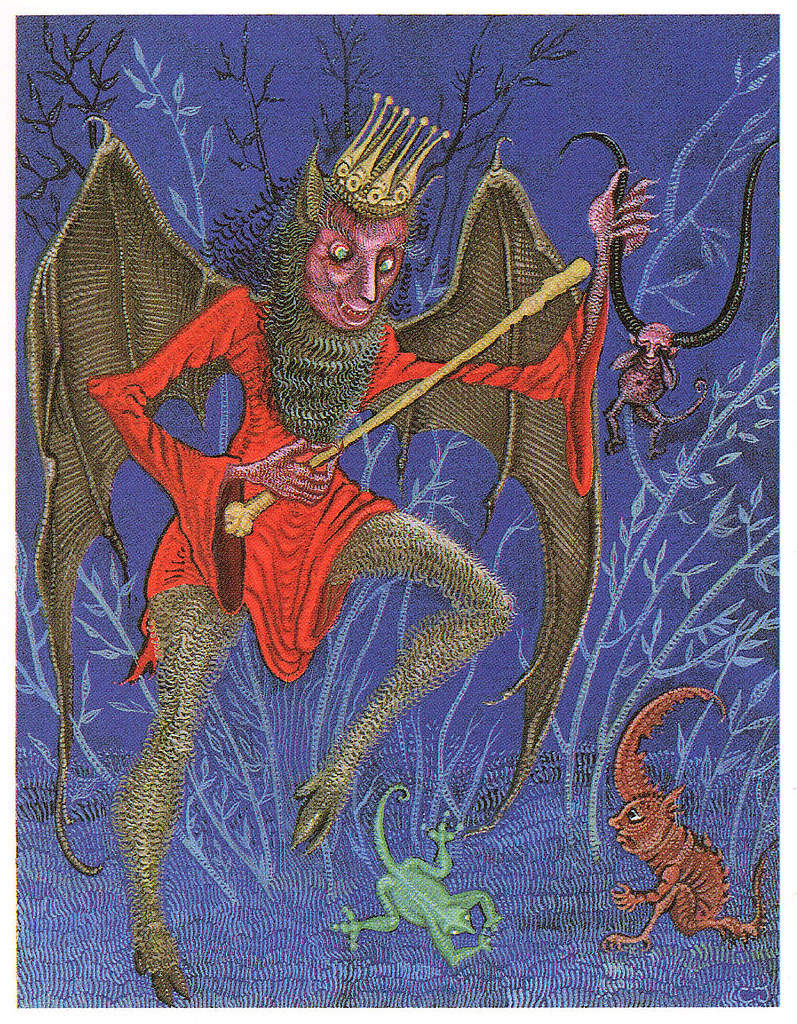


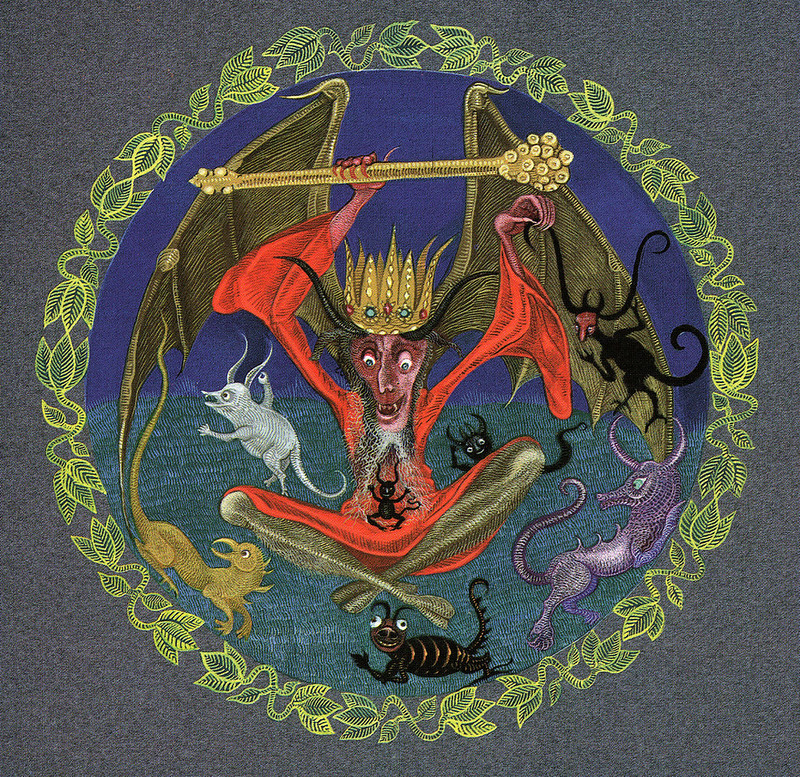



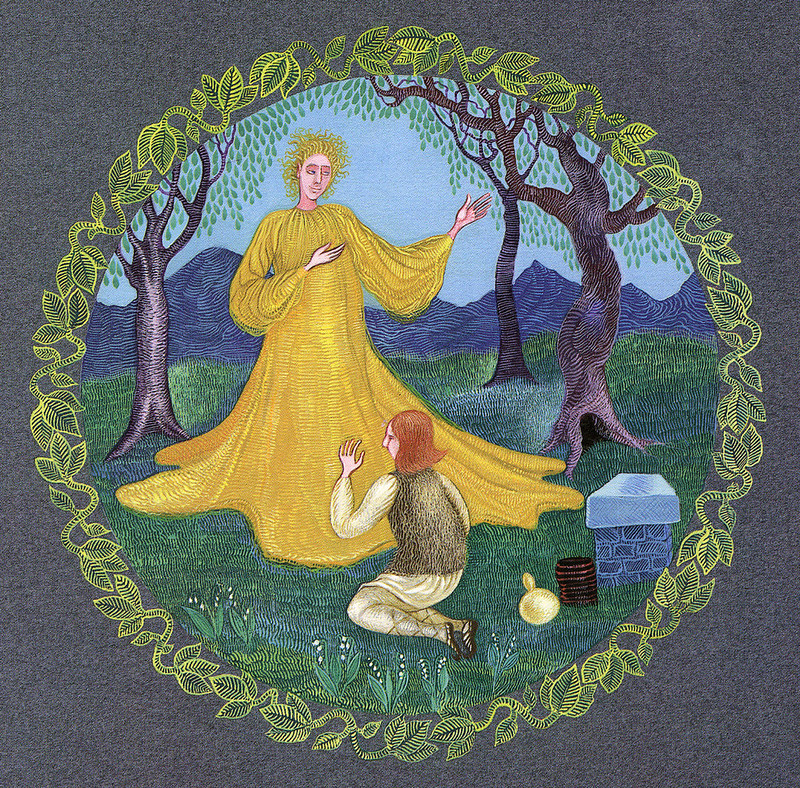
 Illustration for Mira Boglic's Suma Od Koralja - Zagreb, Nasa Djeca
Illustration for Mira Boglic's Suma Od Koralja - Zagreb, Nasa Djeca 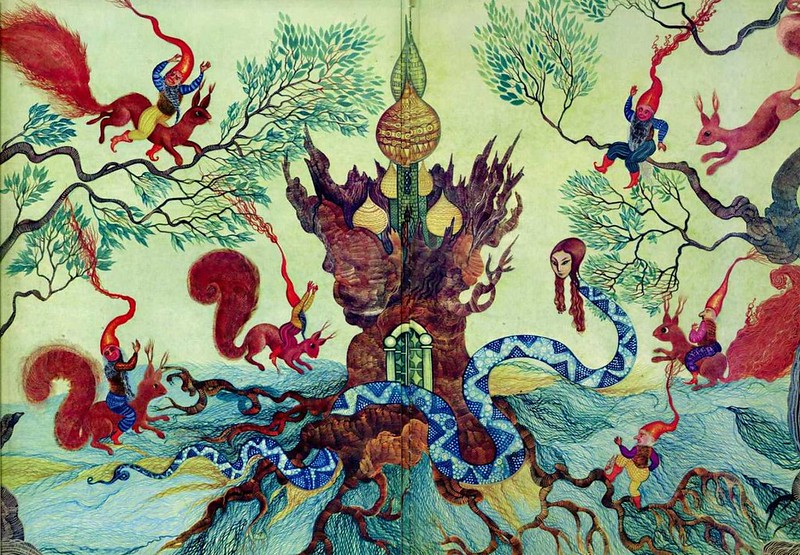 Illustration for Ivana Brlić-Mažuranić - Stribor's Forest, 1981
Illustration for Ivana Brlić-Mažuranić - Stribor's Forest, 1981 






